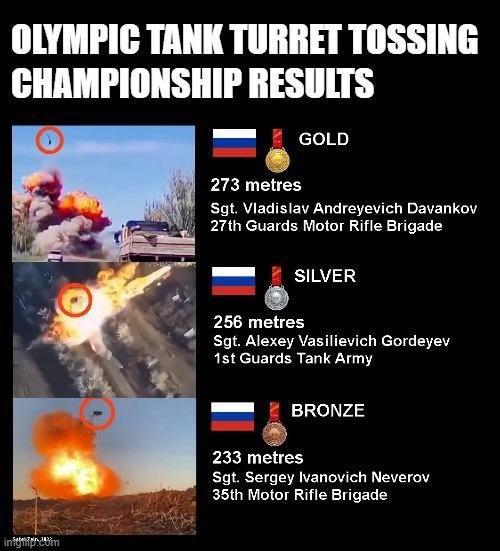-
Posts
12,743 -
Joined
-
Last visited
-
Days Won
339
Content Type
Profiles
Forums
Events
Downloads
Store
Gallery
Articles
Everything posted by Rob
-
The desire to stay and protect your home is a strong feeling. Additionally it represents in many cases virtually the bulk of the family's assets. If you leave your home, it then costs money to live somewhere else, so you need considerable wealth to draw on given that you are also likely to have lost your main source of income. A case in point is the person I am hosting. She lived in village just outside Kherson a few hundred metres from the end of the airport. This was hit on the opening day because it was a military base and fell to the Russians within a week, but most people stayed and lived in their cellars, keeping quiet so they weren't heard by passing Russian patrols and surfacing only when necessary. Most people assumed they should be relatively safe once the war had passed through, though best not to tempt fate. They lived like that until news of the massacres in Bucha got out at the end of March, at which point they decided they didn't want to hang around and be part of a repeat episode, so looked for somewhere to go - which is where we came into the equation. With no income, displaced and now looking for work in the capital, her husband had to keep the liquid funds for basics, while wife and daughter borrowed the money from a friend for the bus to Romania and two airfares on to the UK. It was only £400 for the pair, but that is an average monthly salary over there, and if you haven't got it to hand, non-functioning basic services makes raising funds 10 times harder. Moving isn't an option for many. Half the people in this country have no savings, so what would they do in similar circumstances? Probably stay put in many cases.
-
-
Did they identify it as such, or just as a 1967 1964 penny?
-
A touch of realism? Maybe for only a few, but it helps get the message out given Russian reliance on TV. https://news247gh.com/its-absolutely-impossible-to-defeat-ukraine-russian-pundits-admit-on-live-television-video/
-
RUN AWAY!!! https://www.youtube.com/watch?v=gxoRgpUPXTI
-

LCA catalogue now online
Rob replied to Sword's topic in British Coin Related Discussions & Enquiries
I didn't get the lot I was interested in. Only out by a factor of 6x. -
I bought this and wasn't wholely convinced it was a proof. A view shared by the person I sold it to as well. It was ex Peck and Norweb and has subsequently gone through another sale, but don't have the details.
-
You must have been wealthy then if you had washers at 5 bob a piece.
-

1892S pattern half sovereign
Rob replied to Mr T's topic in British Coin Related Discussions & Enquiries
Nothing in the obvious places - Nobleman, Huth, Dangar etc -
I think he's trying to be all things to all people. He's a fascist even though he claim to be de-nazifying Ukraine as a good socialist. He just does a pick and mix from the dictator's handbook - after all, there's bugger all difference in methods of repression and execution of policy whichever side you look at, just the target scapegoats who have the misfortune to be named. The extremes of either side have always been separated by little more than the thickness of a cigarette paper. If you want to de-nazify Ukraine, the most bang for your bucks is the return of 100K+ Russians to their homes. And if the majority travel in body bags, then it will hasten the end of Poo Tin.
-
I still have a bit of a problem with a clash of edges as I consider it implausible you could get that depth of impression from 28g of silver falling onto another edge, perfectly aligned so as to produce the incuse A as if it were part of the edge. It isn't the same situation as a brockage, where you have a coin in situ to make the incuse detail on one side, all made using one of Boulton's presses utilising much more force than that obtained by gravity. If there was another coin only partially ejected, then I expect the collar to malfunction as the first coin would have to be in the same plane as this coin, and that would surely jam the mechanism. It doesn't add up to my way of thinking. The collars used for this issue are 3 part (or at least my type example - 1819 no stops is so), with their ends joining in the middle of the gaps after DECUS, TUTAMEN and REGNI. That would be consistent with the clear joint line after TUTAMEN, but the other two are not obvious. Where the join should be after REGNI, is that a trace of a full height cross pattee, and in the gap after DECUS a smaller cross - or am I just seeing things? Crosses were used on some edges during William III and Anne on halfcrowns, but my crowns of these two reigns didn't use them (only used on halfcrowns?). I don't have a late Geo. II crown to say what was used on the issues prior to the new coinage. Help someone? The earlier silver used the Castaign edging process, which in the case of a couple of my coins left a very sharp vertical cutoff in one place (with a step in height on the edge), as seen after TUTAMEN above and coincidentally also after TVTAMEN on some of the earlier coins in my trays. Was this consistently the starting or terminal legend on the strip and I'm wondering if could this be a one part collar? I can't see any trace of a vertical line in the appropriate place, but this could be due to wear. Check? I don't think we have the answer yet, so more research required.
-
It might be of interest as we know that at least two incuse edge collars for crowns of this period were made. They weren't used on many patterns, but L&S lists 4 with an incuse edge that could apply (151, 186, 187 & 194), together with a 5th (184) that had an incuse edge but not of full height (clearly not applicable). The collars wouldn't have been thrown away, so maybe the wrong collar was used, replaced and the coin restruck. The coin is a bit dire for research, but are there any hints of understriking anywhere else?
-
Slightly at a tangent, but there's nothing new in conspiracy theorists/flat earthers/tree huggers/preppers. I found the attached in an auction catalogue recently. Enigmatically called Q and presumably dated 1970 given the 10p leaflet was published in that year. Is Qanon the latest incarnation of the league of nutters, or is it just that the letter Q has some magical quality for people of such mindsets that I haven't discovered yet? I blame it all on subversive behaviour by Russia and Trump.
-

LCA catalogue now online
Rob replied to Sword's topic in British Coin Related Discussions & Enquiries
No, I just added up the lower estimates from the featured items section on the website. These are all have over 10K for lower estimates and comprise only a few dozen items. Being simple numbers - no calculator required. What the estimates are for the other lots, I have no idea, but the number will be significant. I don't bother looking at the whole contents until the catalogue arrives. -

LCA catalogue now online
Rob replied to Sword's topic in British Coin Related Discussions & Enquiries
Probably. Covid ensured they had a couple years to trial in house auctions without people attending, so they will have the figures to compare with the previous returns obtained when the sales were in the hotel. One can only assume the returns in the current buoyant climate persuaded them to continue with the in house sales. As it stands, there is no need to hire the hotel room for a few days, move all the lots from the office to the other venue together with about a dozen people involved in the sale who would also have to be put up in hotel accommodation for a couple nights. Whether it is sustainable in the future - who knows? Based on the lower estimates (£1.420m) for the featured lots listed as of 20 minutes ago, the commissions just on these few lots ought to give a good start for their sale income, assuming all find a buyer and the vendor isn't being too greedy. I would hazard a guess that the status quo will prevail until such time as income takes a hit, because any business is essentially a numbers game. -
-
???? Sorry, what's Vienna got to do with an F24?
-
That's an 1882H, no? The 6 has been reworked looking at the varied toning and the 3 looks to be a 2 with modifications.
-

Recommendations Wanted
Rob replied to DaveG38's topic in British Coin Related Discussions & Enquiries
I use Hiscox. Premiums for most insurers are about 0.5% of value insured and have been consistently so for quite a while. 10 years ago the premium was normally halved for being in a bank vault. -
Not necessarily. I usually place my coins with the concave side down (if applicable). Otherwise I will store them obverse up, as people seem to be more forgiving of slight friction to the reverse than for the obverse, or if one side is already more obviously worn than the other, then I will put that side down. Date side up is probably coincidental with collecting a denomination, where the only obvious difference is the date (eg. bun head pennies) with the minute detail differences frequently requiring a glass. Been there, done that with halfpennies and shillings - which is partly why I decided to refocus in 2008.
-

I love Venn diagrams!!
Rob replied to blakeyboy's topic in Nothing whatsoever to do with coins area!
Difficult not to if you believe in the freedom to believe in or display anything other than the characteristics of Erdogan and his ilk. I suppose you are allowed to be a Kurd as long as you don't profess to want your own homeland. Not too keen on his migration towards the religious elements either - religions are divergent in every respect expect for one and that is the unwavering belief that any other religion is profoundly wrong. So many peaceful existences sacrificed on the altar to the great God of Intolerance. -
If a die was used until deemed unsuitable and if only the faulty die was exchanged, it stands to reason that more than one die will be known paired with a specific die. A good job really, as the pairings observed give useful information for the chronology, and in the case of a simple series can demonstrate the order of die use from start to finish.
-
Halfpenny 3 punch possibly if the small protrusion to the right of the upper section is related. My screen also shows a thin line continuing across the vertical level with the base of the top bar.
-
Yes, but the portcullis is double struck (at least). Use the translated strike and it is in the right place. The question is which bit refers to which impression - which is why I said 'I think'
-
That's all right. I think this is the same obverse die as the Cypher over Anchor I got from you. Different reverse though.







